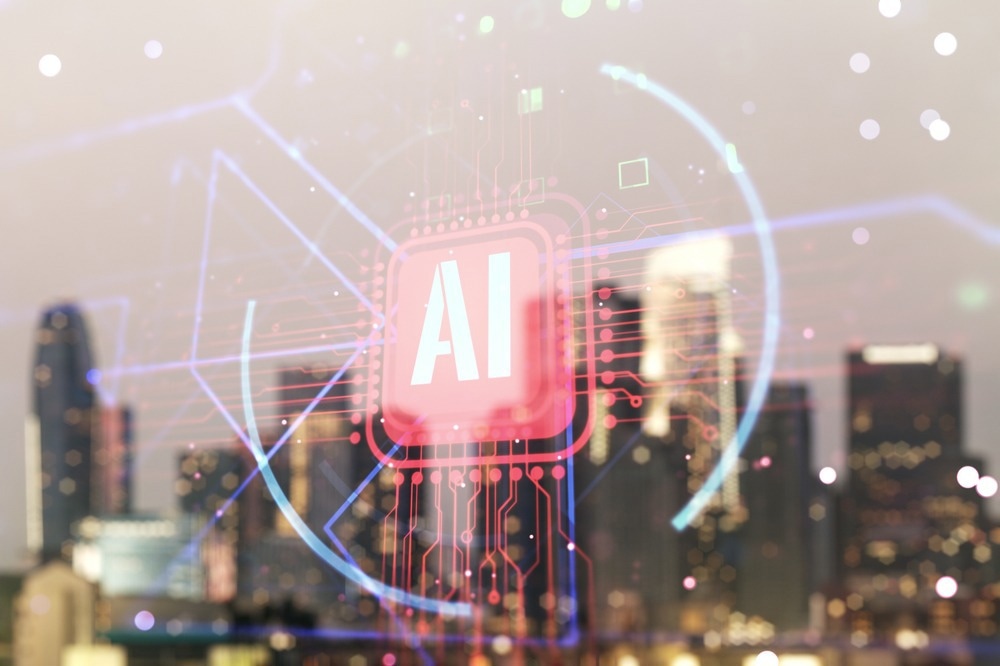Artificial intelligence (AI) has emerged as a highly disruptive technology in multiple sectors in recent years. Currently, there is intense discussion around its potential in the field of art and design. This article will explore whether AI can be used to create imaginative, innovative, and usable architectural concepts.

Image Credit: Pixels Hunter/Shutterstock.com
AI: The Future of Design?
The application of AI to the field of art and design is a highly contentious subject. Conversations have sprung up both online and offline as to the ethical issues surrounding creating images with software such as Stable Diffusion, Dall-E, and Midjourney.
Whilst the ethical issues surrounding the creation of original artworks from text prompts using neural networks are complex, and there are convincing arguments on both sides of the discussion, AI presents a unique opportunity for the design community.
Whilst AI art and design are still in their relative infancy, major strides have been made in the quality and realism of images over the past couple of years. Bill Cusick, the creative director of Stability AI, has stated that there is a playfulness in design that has not been seen before in the field of architectural design.
AI in Initial Concept Design Stages
Sketching the initial concept of a building is a stage in the architectural design process that requires a large degree of imagination. During this design phase, sketches do not have to accurately represent the final building but provide an idea of what the building should look like.
AI imagery is often dreamlike and colorful, much like architectural sketches. However, they are not necessarily actionable as detailed plans. Further design stages are needed to turn an initial idea, whether realized by AI or conventional means, into a final usable project.
A major benefit of using text prompt-based AI software is solving the “thought-to-execution delay” in initial design stages. The goal of a sketch is to capture a project vision quickly, and AI can significantly shorten the time needed to provide an initial idea for a new project.
By employing AI software during the initial design concept stage, clients can be shown the architect’s vision on day one, whereas typically, a delay using conventional means is inevitable.
Another potential benefit of using AI during this project phase is that it has the potential to free up labor. Many different designs can be produced in a fraction of the time it would take with a traditional sketch.
Providing New Design Paradigms
AI can also provide radically new design concepts, due to its ability to blend different architectural styles and inspirations effortlessly based on only a text prompt. As the field of urban planning and architectural design looks for new paradigms in design, AI will undoubtedly provide these.
A key element of architectural design is creativity. The neural networks which are an integral part of AI software help it to learn from designs that it is trained on, and images generated by previous users. AI can come up with completely new and innovative designs in much less time than conventional means.
Case Study: Daedalus Pavilion – Utilizing Machine Learning Algorithms and Computer Vision
Artificial intelligence, in combination with other disruptive technologies such as robotics, is providing some intriguing design concepts already. AI Build and ARUP Engineers have created Daedalus Pavilion, a metal lattice structure that resembles a butterfly in flight.
Video Credit: Ai Build / Youtube.com
Kuka construction robots were used to build Daedalus Pavilion out of biodegradable filaments. Machine learning algorithms and computer vision were employed to analyze mistakes during the construction process and improvise new solutions to improve the design.
Whilst this project was more conceptual art than a building construction, it showcases the potential of AI in the refinement of designs and the construction of usable architectural projects. This technology has huge potential in all phases of the design process, not just the initial concept stages.
Challenges and Outlook
AI is making significant inroads in the field of architecture, providing novel possibilities for design at all project stages, from initial concept realization to floorplan design and final build.
Whilst AI is a disruptive technological paradigm, it is not likely to completely replace human designers, although it may reduce the amount of necessary labor. Architectural expertise will still be required, especially in turning an initial AI-developed concept into a building that is designed well and safe to use by humans.
Dan Harden of Whipshaw has noted that AI in industrial design is still primitive. Providing an accurate representation of the three-dimensional aspects of how users relate to products such as new buildings still represents an existential challenge for AI design software.
AI lacks “embodied cognition”, which makes the full design process hard to replicate. However, Harden has noted that as the field becomes more sophisticated, it will gain an intimate understanding of these embodied principles in architectural design. The future of AI design in architecture and construction is an intriguing and potentially exciting one.
More from AZoBuild: What are the RTF Design Awards?
References and Further Reading
Dreith, B (2022) How AI software will change architecture and design [online] dezeem.com. Available at:
https://www.dezeen.com/2022/11/16/ai-design-architecture-product/
Watkin, H (2016) Artificially Intelligent 3D Printer Creates “Daedalus Pavilion” [online] all3dp.com. Available at:
https://all3dp.com/daedalus-pavilion
Disclaimer: The views expressed here are those of the author expressed in their private capacity and do not necessarily represent the views of AZoM.com Limited T/A AZoNetwork the owner and operator of this website. This disclaimer forms part of the Terms and conditions of use of this website.